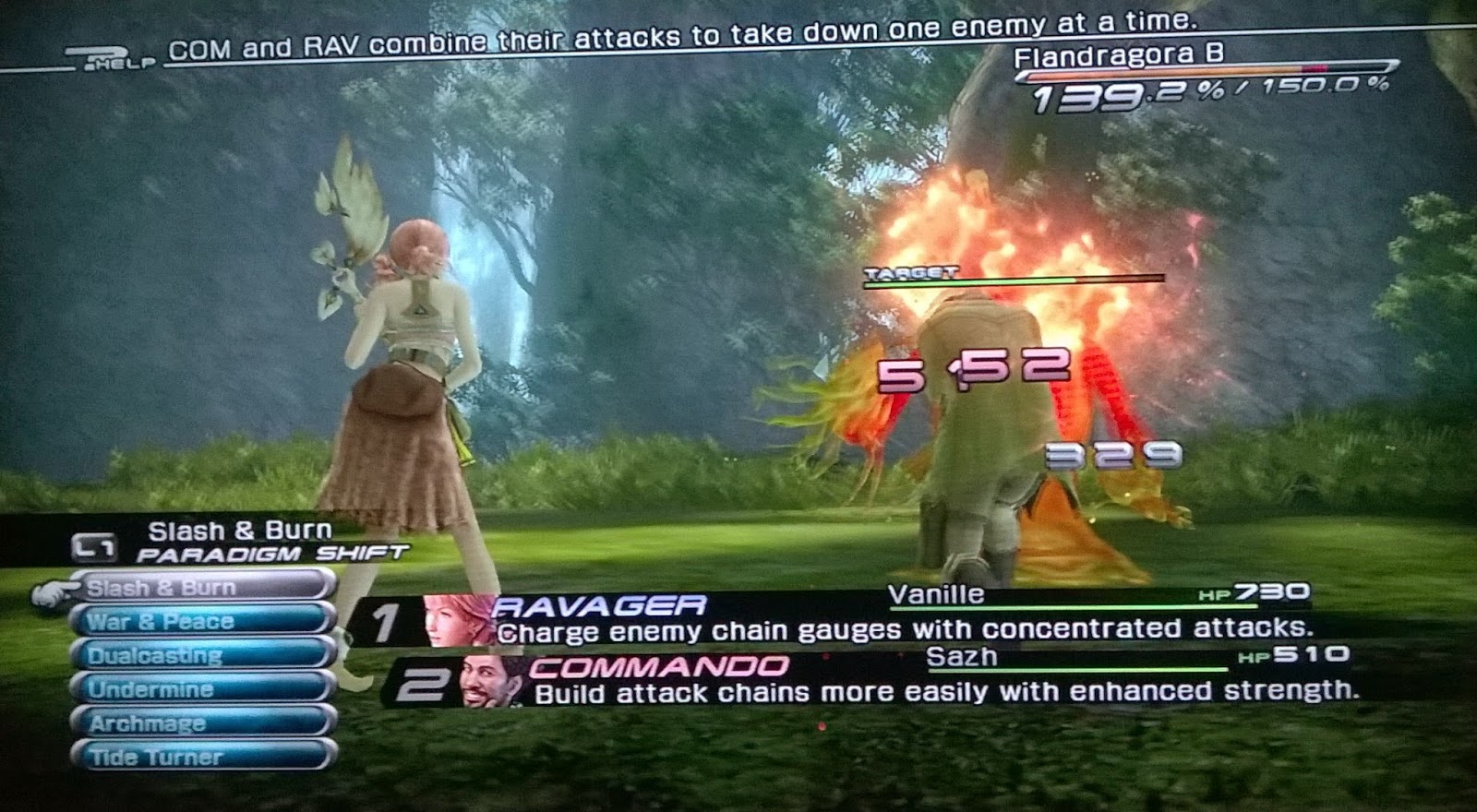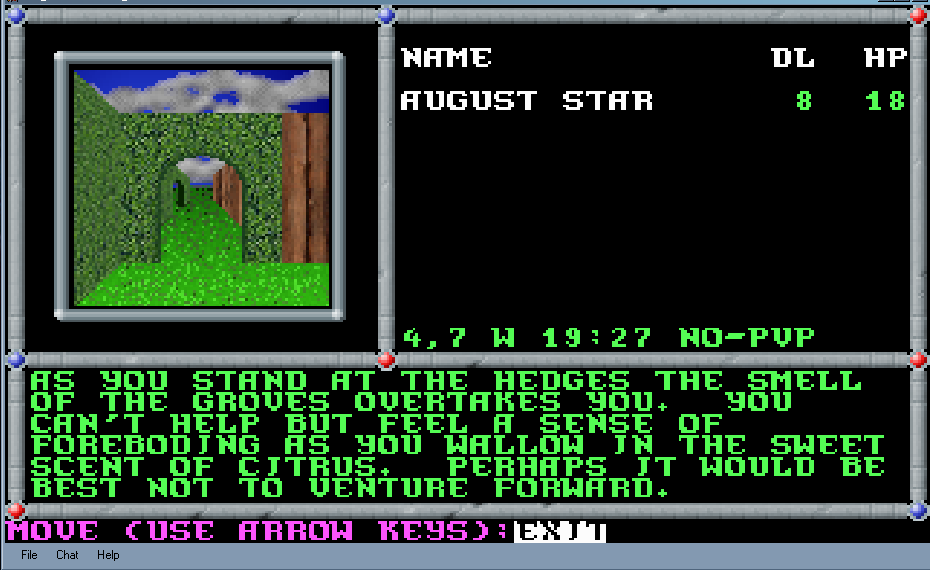Dear Esteemed Readership,
I am aware that at the time of this writing, you somewhat do not exist. This is okay, I'm taking the approach that if I "build it", you will come, and thus I am addressing you anyway. I plan to update this blog at least once a week, on Mondays. I moved once again recently though, so that threw more than a bit of a monkey wrench into my update schedule. That all aside, let's get this show back on the road!
When last I left you, the l'Cie were planning an attempt to rescue Sazh and Vanille, who were being held captive on the Palamecia. The remaining l'Cie were aboard the Lindblum, and planning an attack to rescue their friends. Continuing a self-referential trend in the series, these two ship's names are taken from cities in earlier games.
When last I left you, the l'Cie were planning an attempt to rescue Sazh and Vanille, who were being held captive on the Palamecia. The remaining l'Cie were aboard the Lindblum, and planning an attack to rescue their friends. Continuing a self-referential trend in the series, these two ship's names are taken from cities in earlier games.
 |
| The city of Lindblum, Final Fantasy 9. This city is headed by Cid, and is also an ally of the main characters. From The Final Fantasy Wiki. |
 |
| Final Fantasy 2's Palamecia castle, in glorious 8-bit. The castle is
high in the mountains, and is only accessible through the demon-infested
world of Pandemonium. From The Final Fantasy Wiki. |
The Palamecia is large, and offers some decent choices as far as paths. The extra options are appreciated, but the combats can certainly get a bit tedious. Well, hell, we already know the game isn't perfect. Much of the "dungeon" takes place outside the ship, with the characters over open air. This overall looks very cool.
 |
| Lightning traverses the underside of the Palamecia. |
Last post I talked a little bit about Colonel Jihl Nabaat, the PSICOM officer who studied Dajh, then captured Sazh and Vanille. As Lightning and her crew make it further into the heart of the Palamecia, she begins to panic, humorously going through a series of color-coded alerts. By the end, she can hardly remember what each color means, the system is so complex.
I think Jihl is a missed opportunity, her character is a bit of a mad-scientist, and could have been a neat recurring villain in the game, but instead she is quickly snuffed-out without even a battle. The two other similar villains, Cid Raines and Yaag Rosch, I found much less compelling, yet they make many more appearances throughout the game.
 |
| "Step up to Purple Alert." "Sir, are you absolutely sure? It does mean changing the bulb." |
While Lightning, Snow, Hope and Fang search for the captives, Sazh and Vanille escape. I honestly can't remember how this happens, but for a time you control Sazh and Vanille until they reunite with the full group.
 |
| The engine of the Palamecia reminds me of the core of a certain other flying vessel. |
Recently I showed the treasure spheres, which act as the treasure chests of Final Fantasy 13. The replacement for shops and inns is an interface set-up, or a kiosk, or... whatever you want to call it. They are interspersed generously throughout the game. Here the player can save their game, access shops, and upgrade their equipment. The justification for the kiosk shopping as opposed to your typical rpg brick-'n-morter shops is that the society of Cocoon does the majority of its shopping online. Sure this is convenient, but having all the same equipment available at every kiosk, and removing the typical rpg towns from the picture really takes a lot away from the atmosphere of the game.
 |
| The instant-access, save-'n-shop kiosk. |
The upgrading system is complex, although it probably appears more complex than it is, as it boils down to something simple. You get organic components and mechanical components. First you use bio components to build up a bonus, then you use your mechanical parts to take advantage of them. There are a lot of components! Finding out the differences between these components would take a lot of trial and error work, if there even are that many differences. Overall the upgrade system can be kind of fun, but I think it promises a lot more than it delivers.
Continuing on with the story, once the party reunites, they make their way to the bridge of the Palamecia to confront the human primarch, Galenth Dysley. In an exciting and unexpected development (no sarcasm intended), it turns out Dysley is actually a Fal'Cie, Barthandalus! Instead of Eden giving him orders, as is assumed by the populace, Dysley actually gives the orders to Eden, he is the true mastermind.
 |
| The live combat screen with the party fighting Bart. |
The battle with Barthandalus was challenging and exciting... except for one little thing... he's got this move called Destrudo. Without any intervention, it will one hit kill your party leader. If I haven't mentioned it already, if your party leader is defeated, you automatically lose. I guess this was some kind of balancing mechanic, but I hate it, because certain attacks will just come down to the luck of the draw as to whether an ally goes down, or instead... you lose.
 |
| If I recall correctly, ol' Bart man is charging Destrudo in this pic. |
So, I tried using the Sentinal role to mitigate the damage from the Destrudo attack, because I was thinking within the mechanics as the game presents them. I died many, many, many times. Finally I got sick of it and looked up tips online. It turns out you have to ATTACK while Bart is charging Destrudo, after you do a certain amount of damage he will be stunned, and the final attack will do less damage. I don't particularly like how this is handled, because again, it's trial and error with a mechanic that I don't find intuitive at all. It wouldn't be so aggravating if it weren't for two things: first, if you use the wrong tactic, it's instant death, and second, that he doesn't start using the attack until probably about 5 minutes into the battle. 5 minutes may not seem like much, but it's an eternity when you are doing the same repetitive battle. So, it's trial and error, and you have to slog through defeating his 4 lesser parts before you get to try again. Lame. Once I knew the trick, it was relatively simple to defeat him, but honestly, I don't think anyone likes this type of gameplay.
Before fighting Barthandalus, he lays out the plot for the l'Cie. This is good stuff, it turns your expectations on their head a bit. There is a decent summary at The Final Fantasy Wiki, so I'm just going to reproduce that here: "The other members of the party stage a rescue mission and reunite with
Vanille and Sazh before they confront Galenth Dysley, the Sanctum's
Primarch. Dysley reveals himself as the Cocoon fal'Cie ruler
Barthandelus. He tells them that their Focus is to transform into the beast Ragnarok
and slay the sleeping fal'Cie Orphan, who keeps Cocoon afloat above
Pulse. Slaying the fal'Cie Orphan will result in the destruction of
Cocoon. The party escapes and learns from Cid that the fal'Cie believe
that Cocoon's destruction will summon the Maker, the creator of the
worlds. The fal'Cie cannot harm Orphan themselves.
Vanille and Fang reveal to the party that they were involved in the War
of Transgression centuries prior, and that their Focus then had been
the same: to transform into Ragnarok and attempt to destroy Orphan."
Uh-Oh! Many people didn't like FF13's story, or found it confusing. I do find it a bit confusing at times, but overall, I like it, it's intriguing stuff.
In summary, it's good to be back! I'm still working out the pace and format for this blog, at the moment I'm leaning towards shorter and more frequent posts. I'm taking some inspiration from Inconsolable Nung, where I enjoy the short witty posts. You can consume a few if you have the time, or just jump in for a quicky.
Come back soon for the continuation, here at... This Bard's Tales!















































